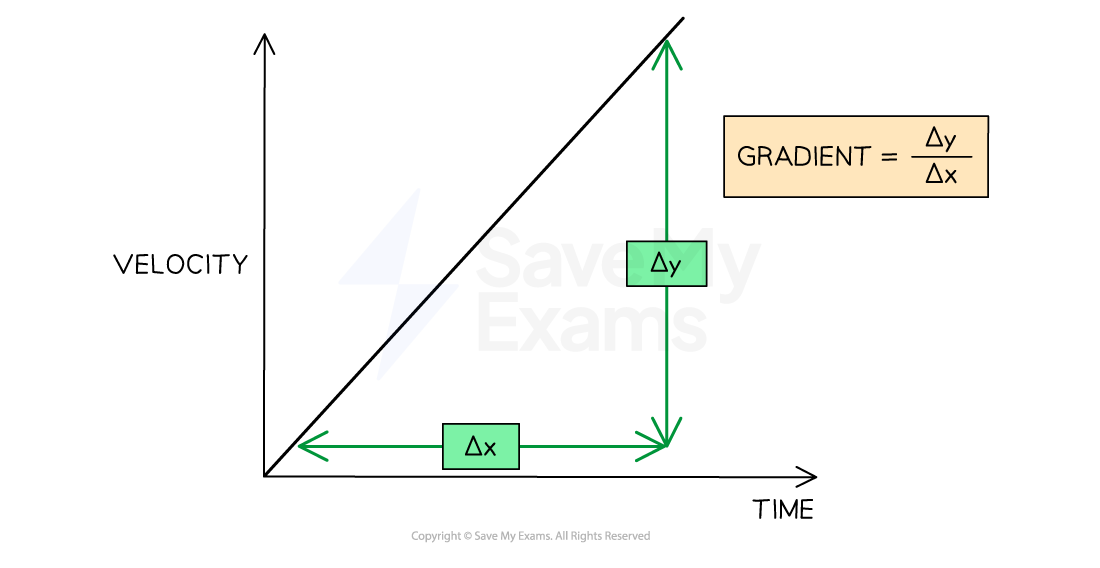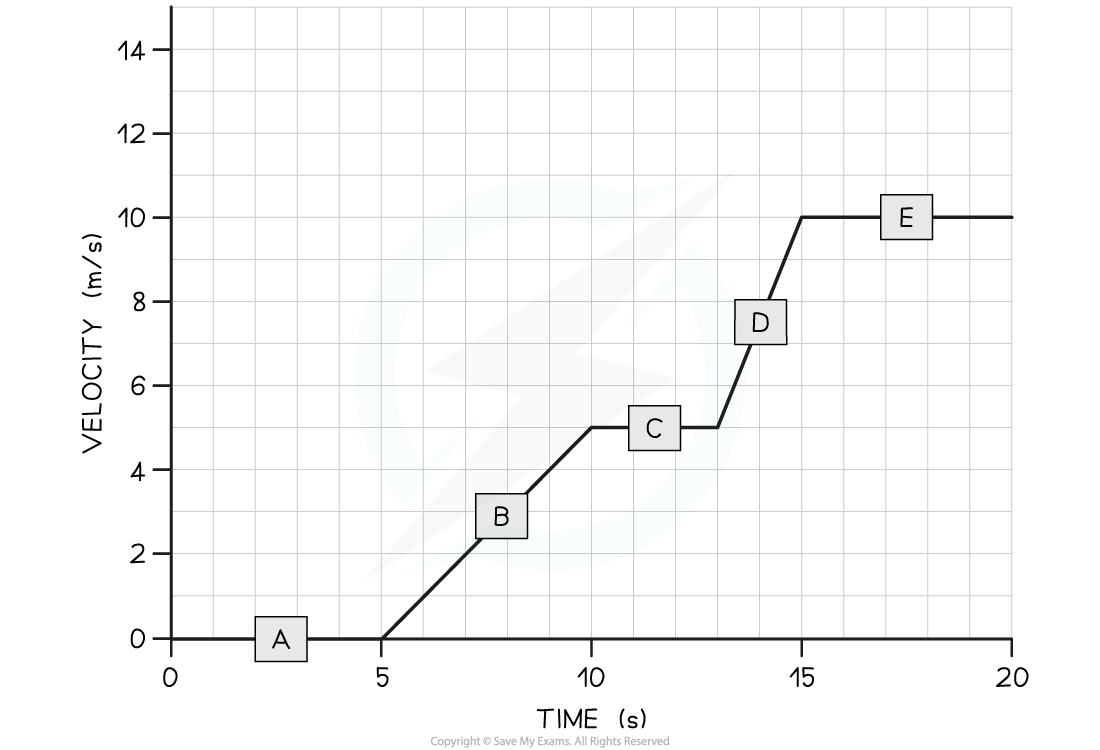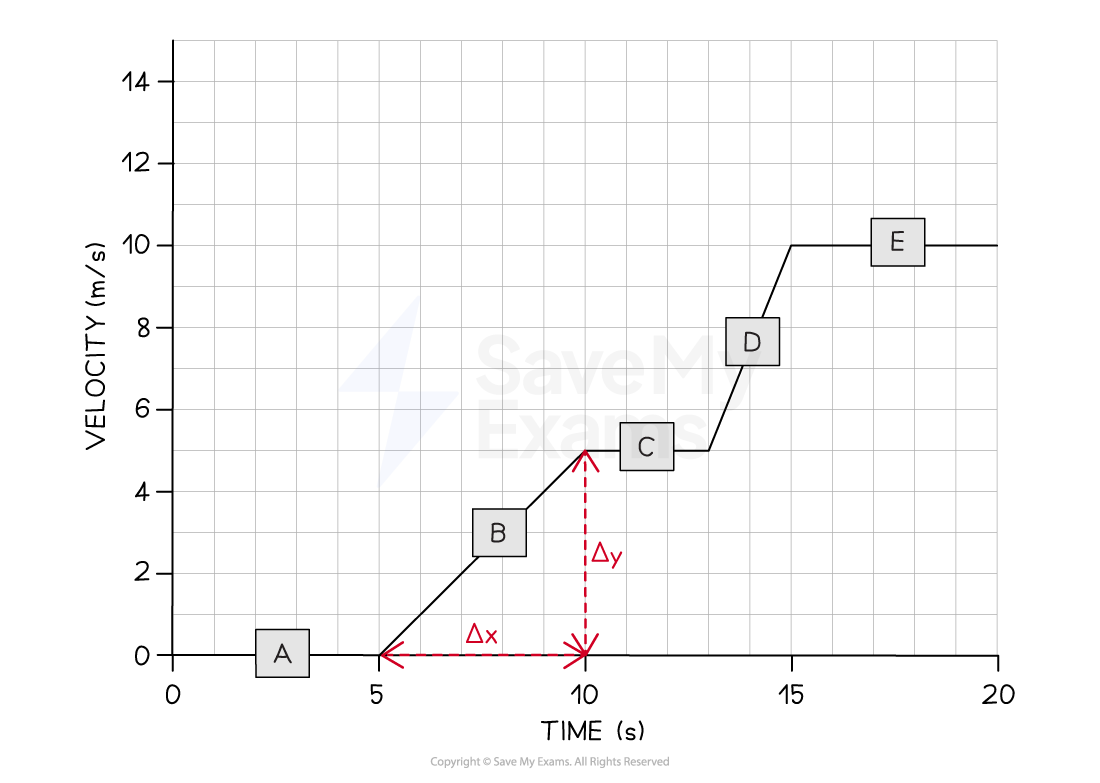Determining Acceleration from V-T Graphs (SQA National 5 Physics): Revision Note
Exam code: X857 75
Did this video help you?
Determining acceleration from v-t graphs
The acceleration of an object can be calculated from the gradient of a velocity-time graph

How to find the gradient of a velocity-time graph
is the change in
(velocity) values
is the change in
(time) values
Worked Example
A cyclist is training for a cycling tournament.
The velocity-time graph below shows the cyclist's motion as they cycle along a flat, straight road.

(a) In which section (A, B, C, D, or E) of the velocity-time graph is the cyclist's acceleration the largest?
(b) Calculate the cyclist's acceleration between 5 and 10 seconds.
Answer:
Part (a)
Step 1: Recall the significance of the gradient of a velocity-time graph
The gradient of a velocity-time graph represents the magnitude (size) of the acceleration
Therefore, the only sections of the graph where the cyclist is accelerating are sections B and D
Sections A, C, and E are flat; in other words, the cyclist is moving at a constant velocity (therefore, not accelerating)
Step 2: Identify the section with the steepest slope
Section D of the graph has the steepest slope
Hence, the largest acceleration is shown in section D
Part (b)
Step 1: Draw a large gradient triangle at the appropriate section of the graph
A gradient triangle is drawn for the time period between 5 and 10 seconds

Step 2: Calculate the size of the gradient and state this as the acceleration
The acceleration is given by the gradient, which can be calculated using:
Therefore, the cyclist accelerated at 1 m s-2 between 5 and 10 seconds
Examiner Tips and Tricks
Use the entire slope, where possible, to calculate the gradient. Examiners tend to award credit if they see a large gradient triangle used.
Remember to actually draw the lines directly on the graph itself, particularly when the question asks you to use the graph to calculate the acceleration.

Unlock more, it's free!
Did this page help you?